World War One
Battle over Belgium
On Summerland’s cenotaph is the name “Van Allen K.M. “
For many of our fallen soldiers the exact details of how these soldiers died in battle are not known. With the assistance of German researchers, some of the details of how Summerland’s Kenneth Marsden Van Allen died are now known.
Marsden Van Allen was born on March 7th 1889 in Brantford Ontario. His parents were Edmund Walker Head Van Allen and Letitia Van Allen. Letitia’s sister Harriet was married to Summerland Reeve R.H. Agur.
Marsden, his sister Marjorie and his mother Letitia Van Allen moved to Summerland in 1905 and lived adjacent to the Agur home in the western portion of town called Balcomo (Prairie Valley). Today the Agur home is the Powell residence on Rutherford Avenue

Kenneth Marsden Van Allen attended Trinity College and later University of Toronto (1906-1911) and received his degree in mechanical engineering. While at University he was a member of the Second Rugby team and the Faculty Rugby Team ( Zeta Psi). He would spend his summers at Balcomo in Summerland.
In the spring of 1915, Marsden attended the Curtiss School of Aviation and in May 1915 joined the 5th Wing of the Royal Naval Air Service. His rank was Flight Lieutenant. By the spring of 1916 was stationed at Dunkirk France. His sister Marjorie traveled to England to be with Marsden during the war.
On April 26th 1916 he was transferred to Coudekerke on the Belgium frontier. On May 4th 1916 he was given the assignment to bomb the German airfield of Mariakerke.
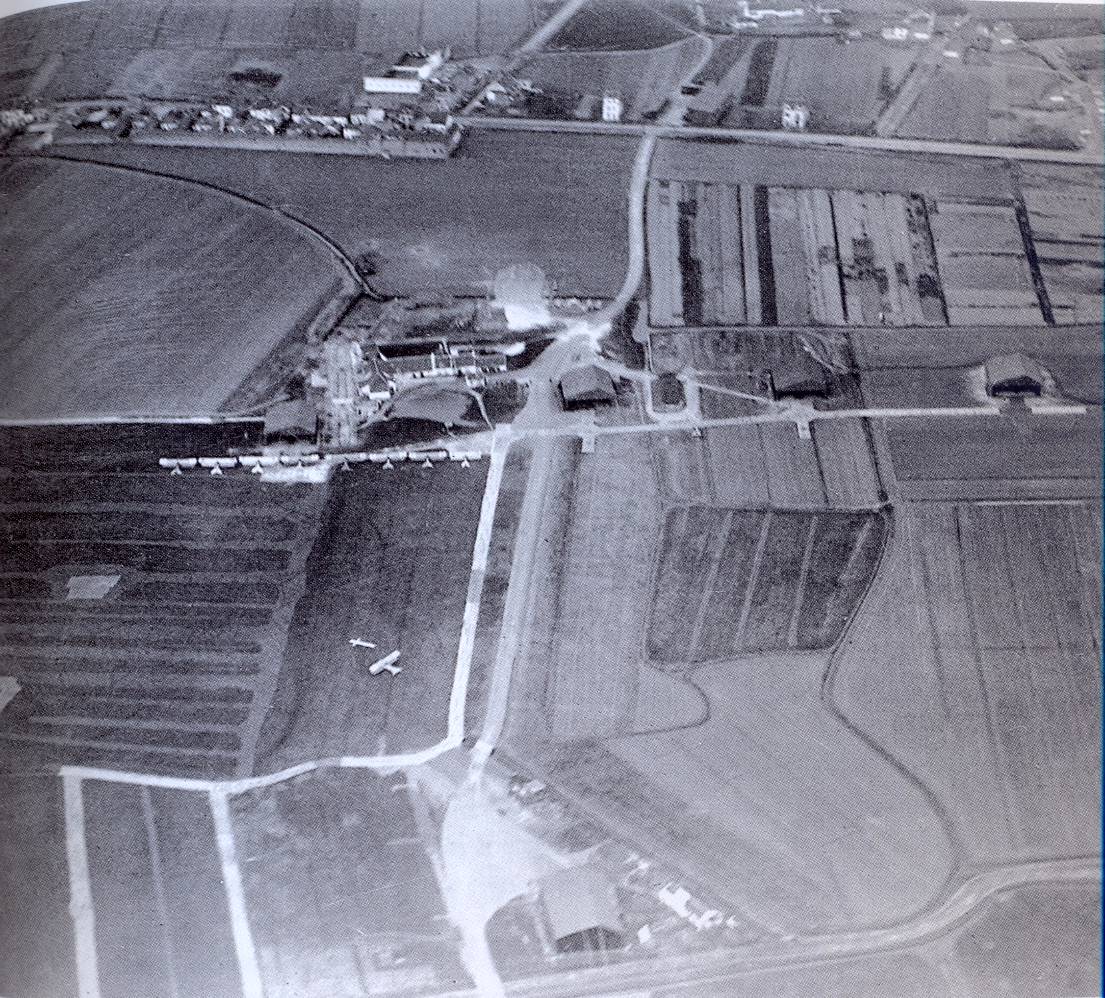
Mariakerke Airfield prior to Van Allen’s attack
Van Allen flew a Caudron G4 series B bomber (nr 9118). This was a biplane with twin engines and was a popular bomber with the Allies. The aircraft was designed by French engineer’s Rene and Gaston Caudron and had a characteristic massive open anterior construction. There were three series of this type of aircraft: series A2 was used primarily for reconnaissance, B2 for bombing and E2 used for training purposes only. Unlike single engine aircraft, the twin engines allowed for a substantial bomb load.
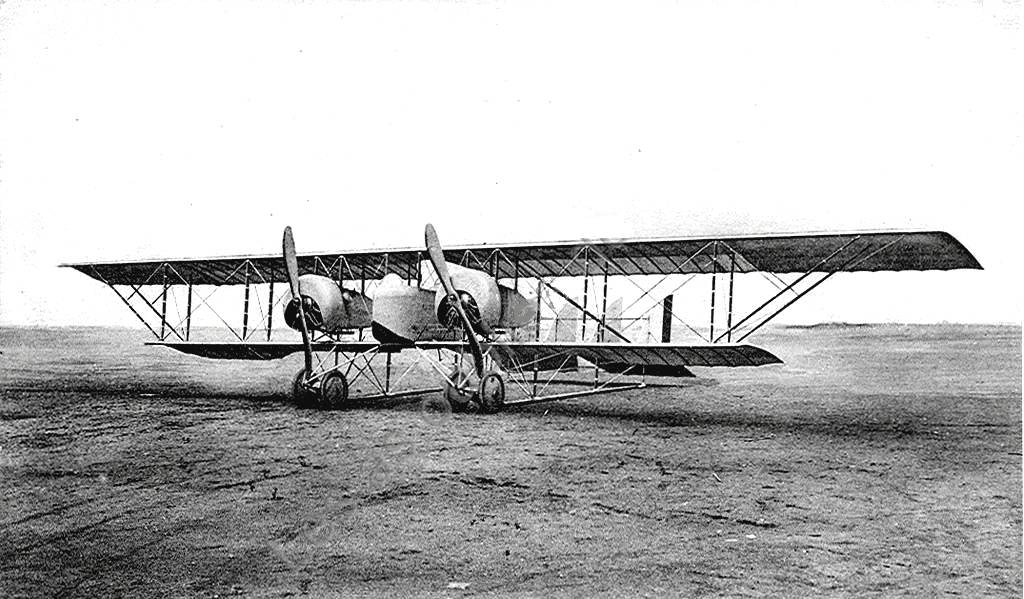
Caudron G4 bomber
On May 4th 1916, Van Allen had accomplished his assignment of bombing the German Airfield of Mariakerke and was returning to his airfield at Coudekercke. Van Allen’s flight path took him near the vicinity of the German Airfield of Oostende. The Germans quickly responded. Flugmeister Benno Schluter of the 1st Marine Feldflieger Abteilung was already airborne when he spotted Van Allen’s Caudron.
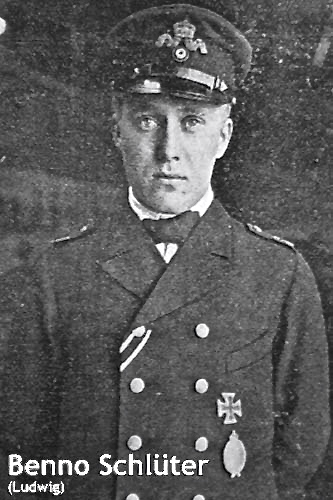
Benno Schluter
Benno Schluter was born on February 27th 1894 at Dorsten Germany. He received his pilot’s license (#399) on May 7th 1913. Schluter’s aircraft was a Fokker E1. This was a monoplane and had significant advantages over Van Allen’s Caudron G4. The Caudron had two 80 HP engines and a maximum speed of 124 km/hour. The Fokker had a single 80 HP engine, was lighter, had greater maneuverability and a maximum speed to 132 km/hour. The German Fokker was the first plane of the war to have a “synchronization gear” machine gun. This device allowed the machine gun to be fired through the arc of the propeller without striking its blades.
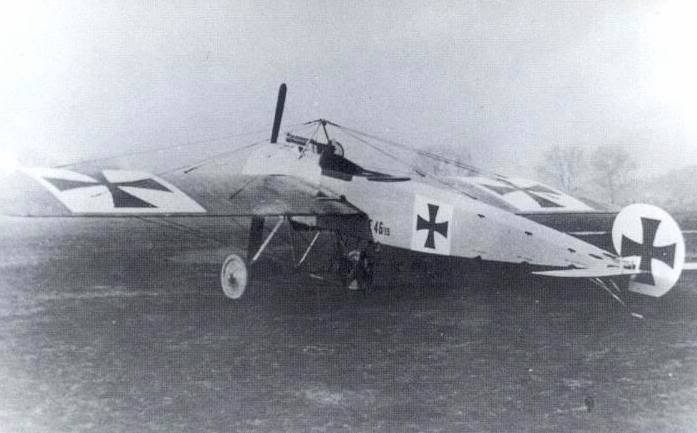
Fokker E1
When Van Allen saw Schluter’s Fokker approaching, he tried to evade the attack. Both planes flew at their maximum speed and Schluter opened fire. Initially the planes were at a height of 1500 meters, Van Allen attempted to fly low to the ground in an effort to lose his attacker. Schluter dove down at Van Allen and continually fired at his plane. He was only 30 meters from Van Allen and Schluter were only 150 meters above the ground. Near the Belgium town of Middelkerke suddenly Van Allen’s plane dived and crashed. Benno Schluter carefully landed his plane and ran toward the injured Van Allen and the wreckage of the Caudron bomber. In his haste to get to Van Allen, Schluter didn’t see a high voltage electrical power line, touched the wire and was electrocuted
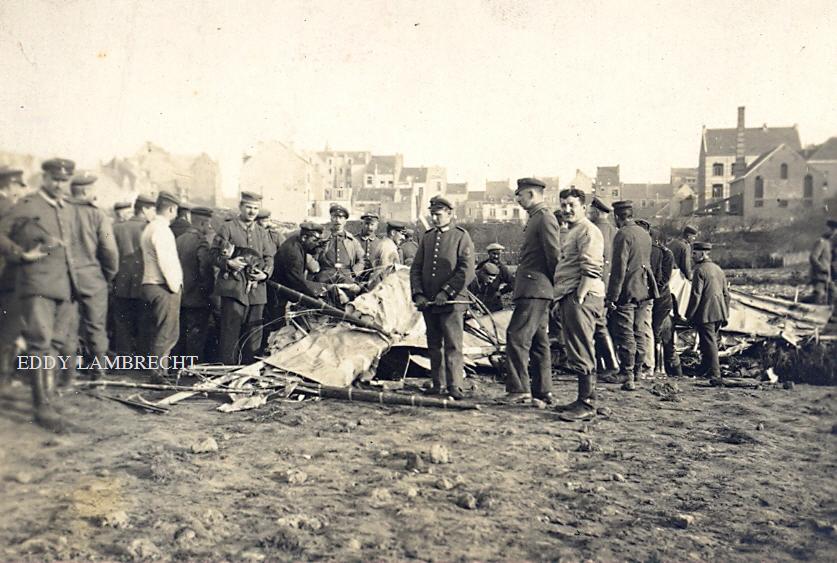
Crash site of Van Allen’s Caudron G4
Both Van Allen (age 27) and Schluter (age 22) were buried side by side with full military honours in the churchyard of Westuine on the Belgium coast. During the memorial, a German biplane with black ribbons flew over the two fallen pilots out of respect. Later a second grave site was established for Benno Schluter in the Vladslo German Military Cemetery. There is a Van Allen gravesite at Ingoyghen Military Cemetery at Anzegen. It is unknown whether the remains of the two airmen were transferred to these second cemeteries or their remains are still buried together at Westuine.
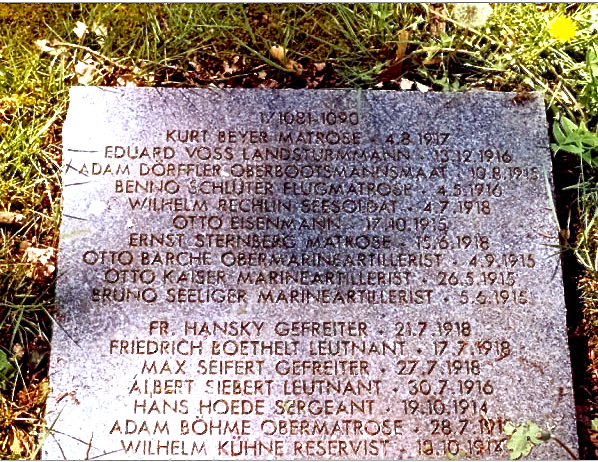
Benno Schluter’s name is listed fourth from the top at the Vladslo Cemetery
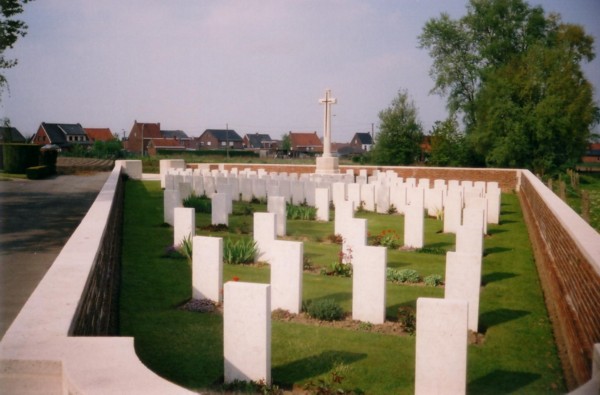
K.M. Van Allen at the Ingoyghen Cemetery
Upon receiving news of the death of Kenneth Marsden Van Allen the Summerland Review stated, “there are many in Summerland who will regret to hear of the death of the young aviator. Both brilliant and accomplished, he was the type of citizen that Summerland can ill afford to lose. The name of Lieutenant Van Allen must have a prominent place on the roll of those who have gone from this place and laid their lives for the Empire.”
At the conclusion of the war, Marsden’s mother, Letitia donated money to build the west wing of the Summerland Hospital as a memorial to her son.
Special thanks to Eddy Lambrecht for his assistance with this article.
|